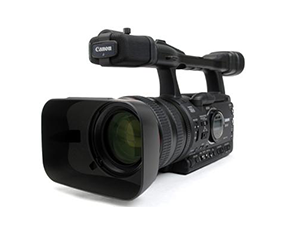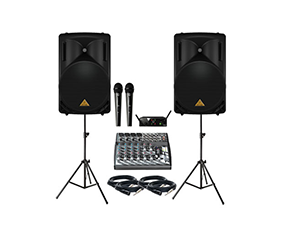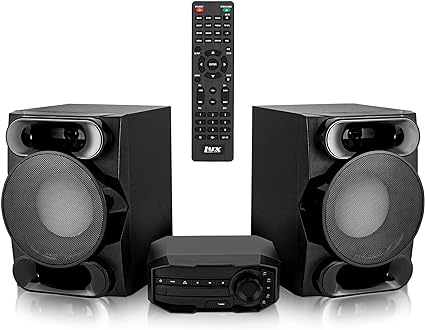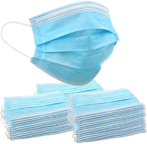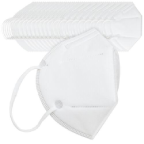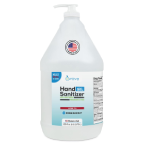No products in the cart.
| Return to Article Index |
|
My First Single Lens Reflex Camera
by NYI Dean Chuck DeLaney
Over the next few installments of My First SLR, we're going to look at the history of some of the major SLR manufacturers and their current product offerings that are of interest to serious photographers and which might become Your First SLR... Before going any further, let's add the standard disclaimer: the bulk of professional photographers using 35mm and digital SLR's these days are - for the most part - divided between Canon and Nikon. That's not to say that the other principal SLR manufacturers, including Minolta, Pentax, Contax, and Leica don't make fine products and have professional users. Indeed they do. However, there is no dispute that Nikon and Canon maintain the largest range of lenses and accessories, and their gear is most readily available in rental shops for the unusual or unanticipated professional need. To start our consideration of Nikon SLR's, we begin with a model that was introduced three years ago and which remains the top shelf camera in the series of 35mm SLR's that are in the more affordable (that is $500 and under) series offered by Nikon. Here's how Nikon positioned the models in a press release when the N75 was added to the line early this year: Nikon's Growing Lineup of "Family Class" 35mm Film SLR Cameras With the addition of the N75, Nikon now offers a complete range of "family class" 35mm SLR cameras, designed for a wide range of skill levels:
 With all these models to choose from, the N80 remains popular. It often turns up on the home pages of the major online camera vendors as a special offer or with a rebate program. When Nikon shipped me an early N80 to test, the camera was on the market for about $650. Today, with the rebate plan in effect, it's available for under $400 if you shop right. The pictures that accompany this article were all taken with an N80.
With all these models to choose from, the N80 remains popular. It often turns up on the home pages of the major online camera vendors as a special offer or with a rebate program. When Nikon shipped me an early N80 to test, the camera was on the market for about $650. Today, with the rebate plan in effect, it's available for under $400 if you shop right. The pictures that accompany this article were all taken with an N80.
Alas, all good things come to an end. Here's a letter I recently sent to Nikon: Dear Nikon USA, I'm really very sorry to return this N80 (as it's known in the U.S., F80 in the rest of the world) to you. You were kind enough to lend it to me for evaluation shortly after the N80 first appeared on the scene in 2000, and you've been kind enough to just remind me occasionally about returning it without getting really nasty or threatening. Why am I sorry to return the N80 to you? Because I've come to enjoy using it and I'll miss it. You will note that the camera has seen some use. But then, it was my job to test it. And when I test a camera that means using it. Even perhaps abusing it a bit. And it held up just fine. Since you've been so kind, I think you're entitled to know how hard your camera worked for me and how well it performed. A Hard Knock Life  Let's start with how I've treated it. I confess, the description can best be described as 'poorly'. It's been carried around for about three years in a soft bag tossed in with a bunch of other stuff like film, batteries, newspapers, pens, a few pet rocks and an acorn or two, taken on perhaps a dozen airplanes, and bashed about in the New York City subway system over and over. I do recall dropping it once or twice from lap height onto vinyl flooring. It's been snowed on a bit, rained on, and been taken all the places a 'good' camera shouldn't go - the beach, the boardwalk, even on the bumper cars at Coney Island. Let's start with how I've treated it. I confess, the description can best be described as 'poorly'. It's been carried around for about three years in a soft bag tossed in with a bunch of other stuff like film, batteries, newspapers, pens, a few pet rocks and an acorn or two, taken on perhaps a dozen airplanes, and bashed about in the New York City subway system over and over. I do recall dropping it once or twice from lap height onto vinyl flooring. It's been snowed on a bit, rained on, and been taken all the places a 'good' camera shouldn't go - the beach, the boardwalk, even on the bumper cars at Coney Island.
I'm sorry. I guess I haven't been a good influence. The camera has also kept late hours, been taken into some shady spots and worked very hard. I would guess I must have run at least 600 rolls of film - mostly Fuji and Kodak slide film - through the camera. In short, it's seen steady wear typical of the abuse professional gear takes. I took to carrying it with me rather than say, my F3 or my N90s because I found it so light and easy to use, and it has that handy little pop-up flash. Since the N80 weighs about half a pound less than the N90, it became the first SLR I've kept with me at all times. In that regard it has actually taken more abuse than my working gear because it's always with me. Since it was my first exposure to an SLR that is really intended for the amateur and advanced amateur market, I want to tell you that it performed extremely well. I found it easy to work with the camera in manual modes. I used the camera often with all kinds of Nikon lenses beside the 28-80 G series lens that you sent me along with the camera. About That Little Lens In fact, before I tell you a bit more about the camera, let me take a moment to tell you how much I like the 'G' series of Nikon lenses based on the results I've seen from them. When I first examined the camera after it arrived at the Institute, the lens struck me as so  light as to feel flimsy. I noted with interest that both the body and the lens were marked 'Made in Thailand.' However, after using the lens and scrutinizing the results, I'm very impressed with its sharpness. I've taken to using it on other Nikon bodies because I like the fact that it can focus close enough to an object that I can make a slide copy of a 4x6 photo without having to pull out a macro lens or use close up filters.
light as to feel flimsy. I noted with interest that both the body and the lens were marked 'Made in Thailand.' However, after using the lens and scrutinizing the results, I'm very impressed with its sharpness. I've taken to using it on other Nikon bodies because I like the fact that it can focus close enough to an object that I can make a slide copy of a 4x6 photo without having to pull out a macro lens or use close up filters.
My optical testing system is quite simple and effective ' when I teach the Introduction to Photography Course at a local university, I see slides that I've taken (and that students have taken) with all different makes and models of cameras and lenses projected to about 4 feet by 6 feet in a big lecture hall. Standing next to the screen I get a close up view of hundreds of the demonstration slides that I've taken in the past few years, the vast majority of which were made using the N80. Sometime I used the 28-80G lens that is supplied with the camera. I've also seen lots of work from students using either the N80 or one of the other popular N series cameras with the newer G lenses, such as the 28-100. The images can be as sharp and good as the photographer can make them. Today's inexpensive zoom lenses are really very good. Back to the N80 itself  As noted, I found the manual controls easy to use once I got accustomed to their location. I've used the body quite a bit with an old manual 300mm Nikkor, as well as other lenses made by Nikon and some of the third party manufacturers that make lenses in Nikon mounts. Every lens performed well on the body.
As noted, I found the manual controls easy to use once I got accustomed to their location. I've used the body quite a bit with an old manual 300mm Nikkor, as well as other lenses made by Nikon and some of the third party manufacturers that make lenses in Nikon mounts. Every lens performed well on the body.
I found the N80 manual clear, and the auto exposure lock function worked very well, a feature I find very helpful because it gives me the opportunity to use down-and-dirty bracketing when I feel the need. The custom functions were easy to use, although I didn't have that much occasion to employ them. I also appreciate that the N80 uses the cheaper and longer lasting CR123 batteries rather than the short-lived and expensive CR2 batteries that most of the smallest cameras (including the N75, 65 and 55) require.  A Few Gripes
A Few GripesAre there some features I would change' Sure. For example, I found the bright light focus assist beam annoying when I used it to make some party pictures. For taking candids in low light, the infra-red focus assist of an N90 with the appropriate SB flash is a far better tool for the professional. And one small quibble ' maybe you've changed it since the early days of the production run, but why are the settings for single and continuous autofocus highlighted in silver while the manual focus set point is just black raised lettering' I had many students bring up their N80s after class to tell me that their camera only has 'S' and 'C' autofocus settings. How can the camera be switched to manual focus' Now it's true, students and new camera buyers should read their manuals, but you know how anxious beginning photographers can be. That the camera has a manual focus setting is a fine thing ' no reason to hide it. The fact that you supply the N80 (and the N65 and N75) with a quartz date version is your choice obviously, but I think they're best left out of a camera. I know that lots of other manufacturers include quartz date features in both SLR models and point-and-shoot cameras, but the 'burn a date, any date, on my film' is the most useless bell-and-whistle in my opinion prior to the advent of 'digital zoom.' I've never been able to see any value in this feature and I always recommend that students and friends thinking about buying a camera avoid this feature since it cannot help pictures and only hurt them. I see that in some outlets today the difference between the N80 and the N80QD is about $30 or more. My advice to any shopper is to avoid the QD feature and spend the money you save on film. About Those Rebates My last complaint is a serious one and I think it applies to a number of products in the Nikon line. Rethink how you handle rebates. Everyone loves to save money and we know in this day and age many people are very cost conscious and do a lot of comparison shopping. I actually liked the N80 so much that I decided to buy one for my favorite nephew as a birthday present two years ago, and I shelled out about $600 for a new N80 and lens back when the price for the N80 was considerably higher than it is today. Now obviously this is proof that I'm a great uncle and he's a lucky nephew, but there's more: At the time there was a rebate program in effect, $60 as I recall. Who doesn't like a 10% savings' I know I do, but to get the rebate, in addition to a sales receipt from a very reputable store, I found that I needed to chop up the box that the camera comes in to send in the rebate certificate that is part of the packaging.  How do you do that for a gift' Do I mutilate the package before I give it to him' Perhaps, after presenting the gift I could have said, 'Hey nephew, mind if I chop up the box that your camera came in' I need to clip a piece of the box so I can get a rebate.'
How do you do that for a gift' Do I mutilate the package before I give it to him' Perhaps, after presenting the gift I could have said, 'Hey nephew, mind if I chop up the box that your camera came in' I need to clip a piece of the box so I can get a rebate.'
Perhaps I should have given him the receipt (but naturally it has my name on it) and let him try to get the $60 back, but he's already got the camera, so I don't see the need to make him richer, nor do I need to show him how much the gift cost. Talking to my friends in the business, I'm told that manufacturers such as Nikon require not only a sales receipt but also a piece of the box because this is designed to thwart abuse by camera stores and dealers that might try to cheat the customer out of the rebate, or cash in a bunch of rebates to help pay the rent that month. That's all well and good, but surely in this day of eyeball recognition systems and stealth bombers you could figure out a way to make sure only the deserving get rebates without requiring chopping up the boxes, particularly if the sales receipt is from one of your large and well known dealers. I ended up blowing off the rebate because I couldn't see a way out of the dilemma that would pass muster with Miss Manners. I think you'll increase your gift giving potential and make it easier on people if you figure a way out of the box mutilation business. This is particularly important since you've been offering a $50 rebate on the N80 this fall and I suspect that program will continue into next year. It is pretty cool to think that a camera that came on the market with a list price around $800 (with the 28-80G lens) can be found for under $400. I think I've covered all the points I wanted to make. Sorry I kept the camera so long, but as I said, I'm going to miss the little devil. I've already started packing my N90 just to get back in shape. By the way, I'm posting this letter on NYI's Web site in the My First SLR column, and in the next installments I'm going to share with the readers some thoughts about the other entry-level Nikon cameras, a bit of the history of Nippon Kogaku, and some other stuff. In closing, let me add that in the future installments I'll be discussing the recent announcement of the new digital D70, which obviously you're bringing forward to compete with the red hot Canon Digital Rebel, and commending you for keeping all-manual cameras in the line such as the F3, FM10 and the FM3A. So, thanks for the chance to get to know the N80. I've enjoyed it. Regards, Chuck DeLaney P.S. I sent a letter to Santa but instead of the N80, I asked for an F100, a D100, and a D2H. Nothing personal. I figure I'll get around to buying another N80 for myself one of these days. |
Copyright © 2003
New York Institute of Photography
211 East 43rd Street, Dept. WWW
New York, NY 10017 U.S.A.
info@nyip.com





























